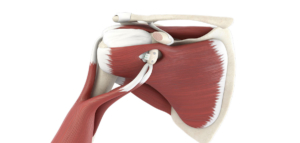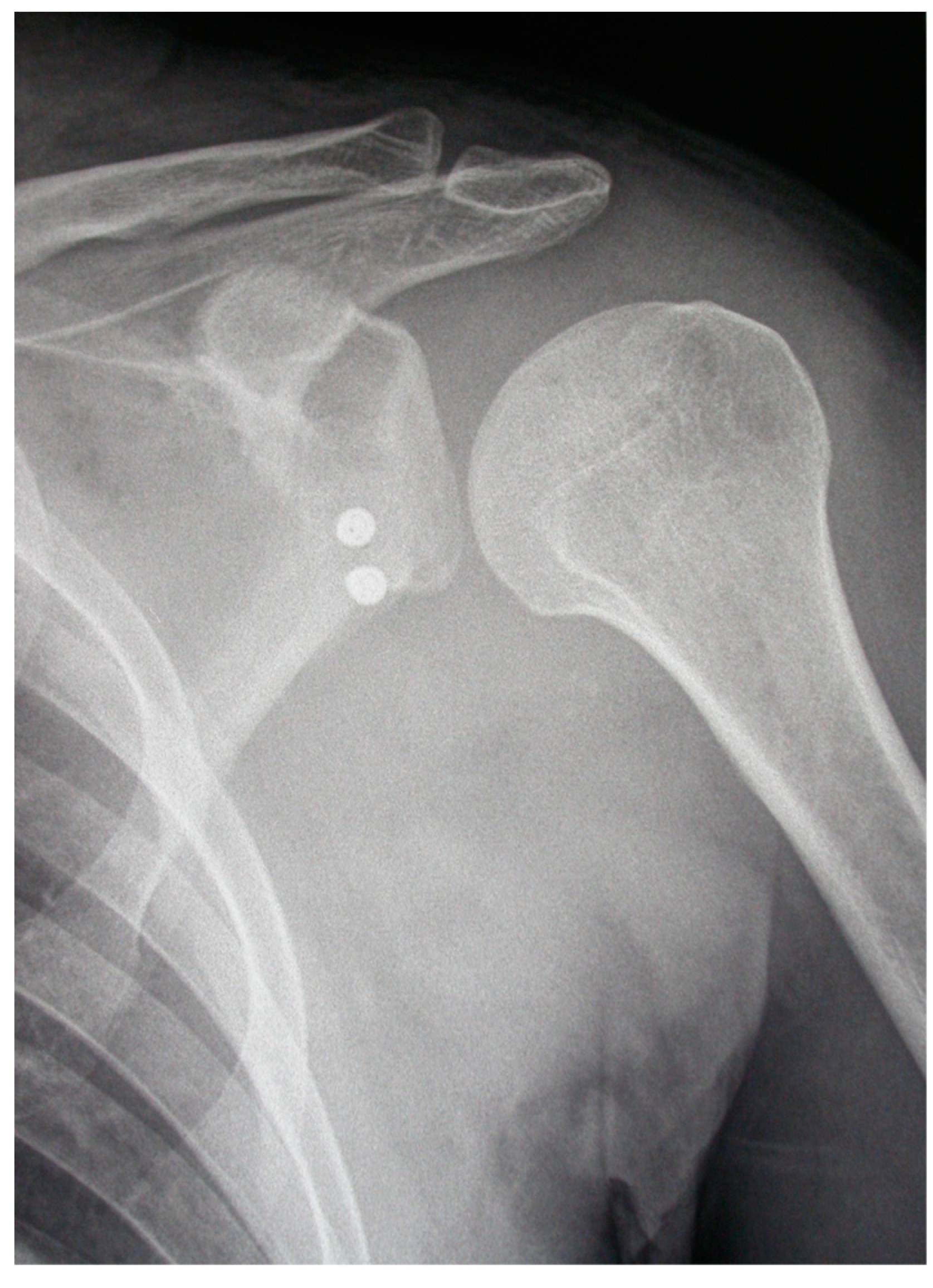Arthroscopic Bone Block Shoulder Surgery: Building a Stronger Shoulder
When shoulder instability becomes a recurring problem, especially after repeated dislocations, it can lead to significant bone loss in the glenoid (the shoulder joint socket). This bone loss can make the shoulder even more prone to instability, creating a challenging situation. That’s where an arthroscopic bone block procedure comes in

What is an Arthroscopic Bone Block?
Imagine your shoulder socket as a shallow cup. When it’s damaged or worn down, the ball of your upper arm bone (humerus) can slip out, causing dislocations and instability. An arthroscopic bone block is a minimally invasive surgical procedure that rebuilds the rim of this cup, making it more profound and stable.

Radiographs showing arthroscopic bone graft fixed with suture buttons. The lateral clavicle is used as a bone graft.
Why is Bone Grafting Necessary?
Think of bone grafting as reinforcing a weakened structure. Significant bone loss in the glenoid compromises the shoulder’s stability, making it difficult for the humerus to sit correctly. This leads to recurrent dislocations and a feeling of looseness in the joint.

How Does the Procedure Work?
The arthroscopic bone block procedure uses small incisions and a tiny camera (arthroscope). This allows the surgeon to visualise the inside of your shoulder and perform the repair with precision.
Here’s a breakdown of the steps:
- Arthroscopy: Small incisions are made in your shoulder, and the arthroscope is inserted to visualise the joint.
- Bone Grafting: Bone grafts are used to rebuild the deficient glenoid. These grafts can come from:
- Distal Clavicle: Bone taken from the end of your collarbone.
- Patient’s Hip: Bone harvested from your own hip.
- Allograft: Bone obtained from a deceased donor (cadaver bone).
- Fixation: The bone graft is carefully shaped and secured to the glenoid using screws or other fixation devices.
Benefits of the Arthroscopic Approach:
- Minimally invasive, resulting in more minor scars and less pain.
- Faster recovery compared to open surgery.
- Reduced risk of complications.
Bone Grafting Options: Understanding Your Choices
Autograft (Your Own Bone):
- Using your own bone eliminates the risk of rejection.
- The distal clavicle or hip grafts are familiar sources.
- There is a small risk of pain at the donor site.
Allograft (Donor Bone):
- It keeps you from having to have a second surgery.
- Screened and processed carefully to make sure it’s safe.
- A very small chance of getting an infection exists.
Who Might Benefit from Arthroscopic Bone Block Shoulder Surgery?
This treatment is usually suggested for people who have:
- Recurrent shoulder dislocations.
- Significant bone loss in the glenoid.
- Shoulder instability that hasn’t responded to non-surgical treatments.
The Goal:
An arthroscopic bone block Shoulder Surgery aims to create a more stable shoulder joint, reduce the risk of future dislocations, and improve overall shoulder function so you can confidently return to your daily activities.

Leave a Reply
Want to join the discussion?Feel free to contribute!